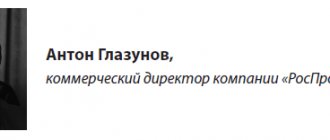Being a class teacher is difficult: you have to learn a lot and constantly, experiment, make mistakes and try again. When leading people, you often have to act intuitively, and the chosen tactics do not always bring the desired results.
Sidney Finkelstein, a professor at Dartmouth College Business School, identifies four principles that superbosses follow in management:
- Set the bar high for the team;
- Give employees freedom of action;
- Increase their level of responsibility;
- Communicate with employees, even if they have already left the company.
Sounds good in theory, but in practice: how do you need to lead so that all four principles work for you and bring maximum benefit? - There are several ways.
“Delegate” style
The “Delegate” style is applied at a qualitatively different level, i.e. suitable for performers whose maturity level corresponds to the highest level. This means that the performers, firstly, are adequately competent to perform the functions assigned to them, secondly, they are fully aware of their involvement in the work being performed, and thirdly, they are ready and willing to take responsibility for obtaining the required result .
This determines that a manager can apply a management strategy in which equally less attention is paid to solving problems and building harmonious relationships than in other situations, because he can calmly delegate responsibility - allow his employees to make decisions and implement them independently.
Permissive leadership style (liberal)
A leader with this style behaves passively, shifting all decisions onto the shoulders of the members of his group.
Levine found that this leadership style was the least effective. The researcher noted that in such a group, children demanded orders and decisions from their leader, did not know how to work independently and were extremely reluctant and ineffective to work together.
However, such leadership can be beneficial if all team members are highly skilled in a specific area, but in most cases it leads to low motivation of team members and unclear distribution of roles.
Lewin's focus on individual behavior in relation to the environment, rather than past experience, was a turning point in the development of psychological science; this scientist is rightfully considered one of the founding fathers of social psychology. His application of the principles of Gestalt psychology, understanding of the influence of situational factors, and work in the field of group dynamics significantly influenced the approach of modern psychologists to the study of group behavior.
Paul Kleinman: Psychology. People, concepts, experiments.
Leadership styles in organizational management
In terms of the role of leadership in an organization, there are 3 types of leadership:
- Business leadership. The basis is the implementation of production tasks. The leader is competent in the professional field and demonstrates the following qualities: the ability to solve complex organizational problems, business acumen, and efficiency. This leadership style in innovation is based on experience and business authority.
- Emotional leadership. Implemented on the basis of human sympathies within the team. An emotional leader in a group, as a rule, inspires the trust of others, inspires confidence, and is able to relieve psychological tension in the team.
- Situational leadership. It appears unstable depending on the specific situation. May combine signs of emotional and business leadership. Example: organizing the removal of people from a building in case of fire.
Each classification of leaders, leadership styles and their characteristics has the right to life. Scientists continue to work in this area, so over time new species and types will appear.
"Sell" style
The “Sell” style is adapted primarily for performers with an average level of maturity. It is expressed in the fact that the manager’s action strategy should be equally focused on solving assigned tasks and building harmonious relationships with employees.
In this situation, the average indicator of the level of maturity of performers indicates that they have a desire to take responsibility for the implementation of a decision to complete a specific task, but cannot do this due to the fact that they are not competent enough in this matter and do not have the proper experience.
Hence it turns out that the leader must choose behavior that will be task-oriented, i.e. to provide clear and precise instructions on what employees should do. And at the same time, he must maintain the enthusiasm of his subordinates and their desire to solve assigned tasks, bearing full responsibility for this.
Direction and functions of management
In addition to leadership style, it is customary to highlight focus. It reflects the manager’s priorities in the performance of general functions. According to this, the orientation can be distinguished:
- to solve production problems;
- to primarily solve socio-psychological problems;
- for optimal solutions to current problems.
The main functions of a manager, in turn, include goal setting (setting goals, comparing them with real conditions, changing tactics if necessary), planning and forecasting (selecting optimal ways to achieve a goal), organization (creating a flexible, economical, self-regulating, reliable and operational system of one the whole, coordination and regulation (adjustment, polishing of the organized system), stimulation, control, accounting and analysis.
Leadership styles psychology. Leadership styles
In psychology, there is such a thing as leadership styles; in essence, this is a set of methods and techniques that a person uses to influence other members of the group. Depending on the leadership style, group management and relationships within it can be either more informal or based on strict adherence to the laws of hierarchy.
Leadership and management styles
Currently, the classification of leadership styles assumes the presence of one of three types of management of relationships and group work by the leader, formal or informal:
- Authoritarian. When using this style, the manager or informal leader builds his relationship with the group in the form of “order - report on the work done.” Such a person makes decisions almost single-handedly; the opinions of other group members are not taken into account. The downside of such relationships is that gossip, distrust of each other, and attempts to bait other members of the team rather than support them often begin to appear within the group. A positive feature of this management style is the high speed of work and the confidence of team members that they are doing everything correctly, since there are precise instructions for each work situation.
- Democratic. In modern business structures and management, this leadership style is often called the most effective, although, of course, it is not suitable for all organizations and groups. The main characteristic of this style is collegial decision-making, that is, the leader takes into account the opinions of the group or those who are considered experts on the issue under consideration. With this kind of management, the carrot and stick method is used, the leader controls the execution of tasks and, depending on the result, rewards or punishes subordinates.
- Liberal. With such management, the work group begins to resemble a family; the leader, in fact, will occupy a formal position, since decisions will be made by the team, and the manager’s opinion about the chosen direction and the quality of task completion is taken into account last. This style is also called conniving, because in reality, the leader does not solve a single problem in the team, lets everything take its course and does not influence the process.
Authoritarian leadership style
Authoritarian leadership implies sole rule, based on orders and coercion. The politician makes all decisions on his own and does not listen to arguments from his colleagues. He strives to minimize all contacts between people in the team. Communication between subordinates occurs through him and under his control. Authoritarian style and leadership theories involve motivating employees through administrative methods, orders and coercion.
Typically, leaders who use this management style come into office through appointment. They first take their place, and only then achieve public recognition through administrative methods. Authoritarian styles of political leadership are the main ones in totalitarian regimes.
Life cycle theory
As has already become clear, it was Paul Hersey and Ken Blanchard who first proposed the life cycle theory. According to them, the most effective and efficient leadership styles depend on how “mature” the leaders themselves are. The term “maturity” here should be understood not as a person’s age, but as his level of education, experience in solving specific tasks that need to be completed, the ability to be responsible for his behavior, and the desire to achieve his goals. Moreover, the term “maturity”, in relation to an individual or group of people, must be considered together with the characteristics of each specific situation, and cannot be considered in relation only to a person.
Based on this, the leader has the opportunity to change his own strategy of behavior, which will depend on the maturity indicator of an individual or group of people. The manager must determine the indicator of this maturity by assessing the level of responsibility, desire to achieve the goal, level of education and existing experience in performing assigned tasks.
According to the life cycle theory of Paul Hesry and Ken Blanchard, there are four types of leadership in total, which correspond to the level of maturity of the performers we discussed above. These styles are:
- "Giving Directions" Style
- "Sell" style
- "Participate" style
- “Delegate” style
Let's talk about each style in more detail.
Education and its types
Definition 1
A permissive parenting style is a style in which the teacher allows the child to do whatever he wants.
The classification of types of education is based on the principles of substantive diversity of educational goals and methods of their implementation.
Education is a multifactorial process and is greatly influenced by the natural environment, the hierarchy of social values, educational institution, family and school, organizations for children and youth, art and mass media, and everyday professional activities.
Based on the institutional characteristics, family, school and out-of-school education, religious education, education at the place of residence, in various children's and youth organizations, education in orphanages, and boarding schools are distinguished.
Are you an expert in this subject area? We invite you to become the author of the Directory Working Conditions
The educational process is the relationship of goals and content, methods and means, and, of course, the results that were achieved - these interconnected basic elements are the structure of the educational process.
The main goal of the educational process is to help a person achieve the expected changes under the influence of specially prepared educational actions.
Such goals accumulate the humanistic attitude of the educator to the personality of the person being educated.
The unity of purpose and content determines the direction of education, based on which physical, aesthetic, moral, mental, and labor education are distinguished.
New directions in education are also being formed, which are necessary at the present time - legal, economic, civic, environmental education.
When upbringing is well organized, the result is the formation of a person’s ability to self-education.
In the process of self-education, a person assimilates the experience of previous generations through internal mental factors that ensure this development. Education is impossible without self-education, therefore they must be considered as two sides of the same process, moreover, with self-education a person educates himself.
Finished works on a similar topic
Coursework Permissive parenting style 400 ₽ Essay Permissive parenting style 220 ₽ Test work Permissive parenting style 200 ₽
Receive completed work or specialist advice on your educational project Find out the cost
Self-education refers to the internal self-organization of a person, aimed at assimilating the experience of generations for one’s own development.
A person directly receives the experience of generations through self-education using his own means and aspirations.
As for school education, this is the organization of life and educational activities in a school environment, including extracurricular activities. It consists of maintaining school traditions, holidays, and organizing self-government.
Note 1
The success of educational work largely depends on the personality of the teacher, on the nature of communication with children, the psychological and educational atmosphere of the classes.
Education outside of school assumes that the designated educational tasks will be solved by educational institutions located outside of school - these are children's art houses, development centers, clubs for young naturalists, ecologists, etc.
The role of religious education is very important, since believers make up about 90% of humanity; its implementation occurs through religious traditions and rituals.
Education in the area of residence occurs through health camps, clubs, sports competitions and holidays, which are organized by parents and teachers.
Leadership theories
The famous French political scientist Jean Blondel believed that the concept of political leadership arose at the same time as the first associations of people arose. In his opinion, leadership qualities were the basis for assessments of political power, both by the authors of Antiquity, and the cornerstone of all the main elite concepts of modern times.
Classical leadership theories. The personal theory of leadership is rightfully considered classic. The approach to studying the qualities of a leader from the point of view of the characteristics of his personality can be traced already in the texts of ancient authors. They tend to define the portrait of an ideal ruler as a composite image of previous successful leaders. Early works were based on the fact that only someone who has a set of certain character traits (qualities) can become a leader; they studied them using the example of previous rulers and gave behavioral recommendations. The oldest sources for studying this theory can be the Indian “Arthashastra”, the teachings of Confucius on management, the ancient Chinese treatise “Tao Te Ching”; The works of outstanding thinkers of Antiquity stand apart, especially Plato (“State”, “Politician”, “Laws”) and Aristotle (“Politics”).
In the 19th century, the theory of the “great man” personality was transformed into the theory of leadership qualities developed by T. Carlyle (Trait Leadership Theory), which, in fact, improved and gave a complete form to the personality theory
In contrast to the beliefs of their predecessors, who noted that a leader must be born, the authors of the new concept (Carlyle, Galton), studying the character traits of famous personalities of the past, also focused attention on the external attributes of leadership, such as education, experience acquired in the process of life. Read more about this theory here
Another classic theory of leadership grew out of criticism of trait theory. Contingency Theory explains leadership not as a set of personal characteristics, but as the environment, the situation that determines the leader and his actions. Developed in the late 1940s and early 1950s, this approach was shared by Stogdill, Mann, and others. New concepts of leadership grew from their developments, and behavioral and situational analysis of this phenomenon was applied. At the same time, environmental theory began the emergence of an integrative approach to the study of leadership, which combines it and trait theory. The latter, by the way, is being developed by many scientists today.
Basic modern theories of leadership. Contemporary leadership research builds on refined approaches to defining and studying leadership developed over the past 50 years.
Behavioral theory of leadership (Behavioral Theory), in contrast to the theory of qualities, is more progressive, since it states that leadership qualities can be acquired in the process of life, one can learn them, because they are not always inherent in a person from birth. As a result of research conducted at the universities of Ohio and Michigan, scientists came to the conclusion that two behavioral categories predominate in leadership - task orientation and people orientation. This approach also studies leadership styles in detail, which forces many authors specializing in the problems of effective management to turn to this theory.
For more information about the behavioral approach to leadership, you can see this
Authoritative or democratic parenting style
In its pure form, the democratic style of education is considered the most optimal. Children raised in this style grow up psychologically healthy, developing harmoniously and entering adulthood without fear.
Authoritative parents tend to encourage the child’s initiative and independence, exercising invisible control over his life. In democratic families, parents discuss their interests with their children, analyze their actions and find solutions together.
From childhood, a child is accustomed to discipline and respect for people and their work, therefore they trust him and do not limit his freedom. At the same time, each violation of the rules entails discussion and certain consequences: if you didn’t clean up after yourself, you were left without a tablet.
But, unlike the authoritarian parenting style, the child does not feel bad - he only realizes that he broke a rule and was responsible for his action. It will never occur to him that they began to love him less after that.
The only downside to the authoritative parenting style is that it is quite rare. Nevertheless, parents, like all living people, tend to get tired, nervous, sick and have circumstances that do not allow them to pay enough attention to their child.
However, if you adhere to democratic views in raising children, then you are on the right track, and your children have every chance of becoming happy and successful adults.
Psychology of leadership and management. Leadership and Guidance
Leadership in social psychology refers to relationships of dominance and subordination, influence and followership in the system of interpersonal relations in a group. Close to it, but not identical, is the concept of “leadership”, which, unlike the first, is an officially defined, predominantly social phenomenon in nature, since the leader is nominated by the group itself, and the leader, as a rule, is appointed. Management regulates relationships within social organizations; this is a purposeful and controlled activity, where the leader has more specific levers of influence on the group and each of its members (sanctions), and also represents the group outside. According to M. G. Yaroshevsky1, leadership can be considered as officially sanctioned leadership.
In social psychology, many concepts of leadership have been developed, among which the most famous are:
• trait theory - an earlier approach, according to which a leader becomes one who initially has special abilities and qualities, thanks to which he is promoted to leadership. One variant of this approach is the charismatic concept of leadership, according to which leadership is bestowed on individual outstanding individuals as a kind of grace (“charisma”). A leader is characterized by the following psychological qualities: desire for achievement, perseverance and initiative, self-confidence, a sharp and flexible mind, competence as a thorough knowledge of one’s business, strong will, the ability to understand the peculiarities of people’s psychology, and organizational skills. However, an analysis of real groups has shown that sometimes a person who does not have the listed qualities becomes a leader, and, on the other hand, a person may have these qualities, but not be a leader; • situational leadership theory, which places particular emphasis on aspects of the situation in which the group operates. According to this theory, a leader becomes the person who, when a particular situation arises in a group, has qualities, properties and experience that can optimally resolve this situation for this group. In different situations, a group may nominate different people as leaders; 1 See: Yaroshevsky M. G. Program-role approach to the study of leadership of a scientific team // Problems of leadership of a scientific team
M., 1982. • synthetic theories focus on the complex, holistic nature of the study of leadership, exploring the relationships between the main components of the process of organizing interpersonal relationships in a group: leaders, followers (or followers) and situations in which leadership is exercised.
Communication between parents and children as a determinant of child development
We will try to identify and analyze such forms of family communication in which the mutual contribution of both parents and child in initiating and maintaining the style of interaction, resulting in the formation of behavior, characterological characteristics and self-awareness of the child, is clearly manifested.
L. Benjamin made a significant contribution to the development of the problem of the influence of parental behavior and relationships on the child’s behavior. The model of relationships in the “parent-child” dyad developed by her and well experimentally substantiated allows not only to characterize the behavior of each of them, but also to take into account the existing type of relationship. According to this model, the relationship between parental behavior and child behavior is not clear-cut: a child can react to the same parental behavior in at least two ways. Thus, he can respond to parental behavior “additionally,” i.e., with an initiative to provide independence, by running away from pursuit, but he can also respond to parental behavior “defensively,” for example, in response to rejection, the child may try to behave with parents as if they loved him and were attentive to him, and thereby, as it were, inviting his parents to change their behavior towards him.
Following the logic of this model, we can assume that a child, growing up, begins to behave towards other people in the same way as his parents behaved towards him. In the study, L. Benjamin also specifically examines the issue of the relationship between the child’s self-awareness (as a form of self-regulation) and the parent’s attitude towards the child: this connection is revealed as introjection (transfer inside) of the parental attitude and ways of managing the child’s behavior. So, for example, shaming a child can be transformed in his self-awareness into a tendency to self-accusation, the dominance of parents in relationships with him is transformed into an orientation to be the master of himself, cruel self-leadership.
According to the method, i.e., according to how the “interiorization” of the child’s self-awareness occurs, several types of communication can be distinguished: 1) direct or indirect (through behavior) instillation by parents of an image or self-attitude; 2) indirect determination of the child’s self-attitude through the formation of his standards for performing certain actions, the formation of the level of aspirations; 3) control over the child’s behavior, in which the child learns the parameters and methods of self-control; 4) indirect control of the formation of self-awareness by involving the child in behavior that can increase or decrease his self-esteem and change his self-image.
An analysis of the complaints and problems that parents address shows that the most important traits identified by parents in a child and at the same time acting as the object of their inspiring influence are: 1) the child’s strong-willed qualities, his ability to self-organize and determination; 2) discipline, which in the parental interpretation often turns into obedience, 3) the child’s subordination to parental authority; 4) interests, primarily in studies; 5) abilities - intelligence, memory.
The image and self-esteem instilled in a child can be both positive (the child is taught that he is responsible, kind, smart, capable) and negative (rude, stupid, incapable).
R. Langs, analyzing the relationship between parents and children in such families, introduced the concept of “mystification” - instilling in children what they need, who they are, and what they believe. One of the forms of mystification is attribution, which, in turn, is subdivided into attributing to the child “weakness” (for example, illness, inability to find a way out in difficult situations) and “badness” (baseness, immorality). Another form of mystification is invalidation—the forced devaluation of a child’s points of view, his plans, intentions, and interests.
An analysis of “My Child” essays written by parents experiencing difficulties in raising children provides many examples of various attributions and invalidations.
Of course, negative statements by parents about their children, at least partially, may have a real “ground” in the behavior or character traits of the child, however, translated into his self-awareness in the form of “calling a spade a spade” parental “sentences”, these parental “sentences” opinions and assessments begin to determine the child’s self-awareness from the inside. The child either agrees with this opinion (consciously or unconsciously) or begins to fight against it.
Explicit, verbal, suggestive influences sometimes contradict indirect influences. For example, a parent may claim that the child is dear to him and he values him, but demonstrate the opposite through his behavior. In this case, a situation called a “double bind” arises, which has negative consequences for the formation of the child’s self-awareness.
Types and styles of leadership
K. Levin, from the point of view of style and methods of work, identified the following types of leaders: authoritarian, democratic, conniving.
Authoritarian leadership style.
A person endowed with power makes all decisions himself and gives orders. Such a boss is a “despot”. The problems of his employees are of little concern to him; the work process and the solution of assigned tasks are important to him. He is the sole ruler.
Democratic leadership style.
The boss works in contact with his subordinates. The team takes part in discussing tasks and making decisions. This style simplifies problem solving and maintains warmer relationships in the team. But tasks are not completed as quickly as with an authoritarian leadership style.
Understanding Leadership Styles
The term “leadership style” is most often used in management. This is the name of the system of approaches to the employees of the enterprise that the manager uses. By choosing the right leadership style, you can achieve improved performance through employee motivation and other management methods.
Take our proprietary course on choosing stocks on the stock market → training course
It should be noted that leadership style is an integral part of the boss’s character. After all, it is simply impossible to fully consciously approach the choice of one method or another. Sooner or later, some personality traits will still appear in the process of managing labor resources.
When choosing a leadership style, you need to base it on the leader's goals. That is, what he wants to achieve from his actions. For example, if the team is well-coordinated and is able to independently perform most of the work, then the main thing in managing it is to motivate each employee to increase their productivity. In this case, a democratic management style is perfect.
If employees are accustomed to performing tasks “under pressure,” then it is recommended to use an authoritarian style, when the manager dictates what, how and in what time frame.











